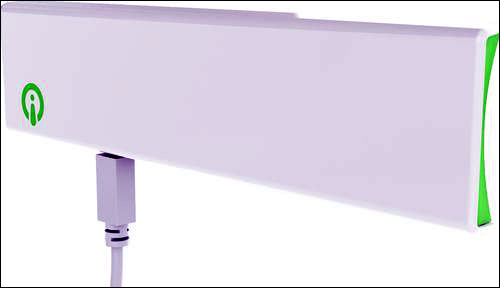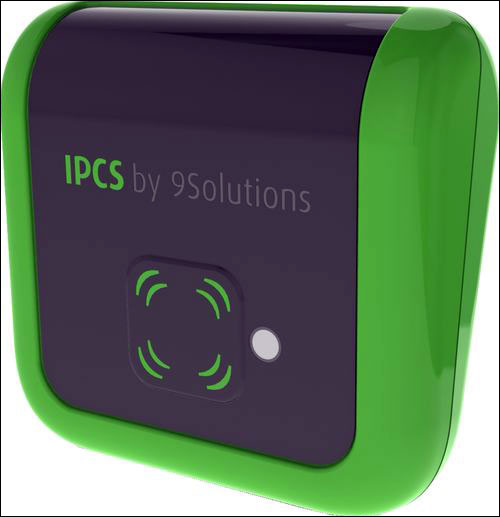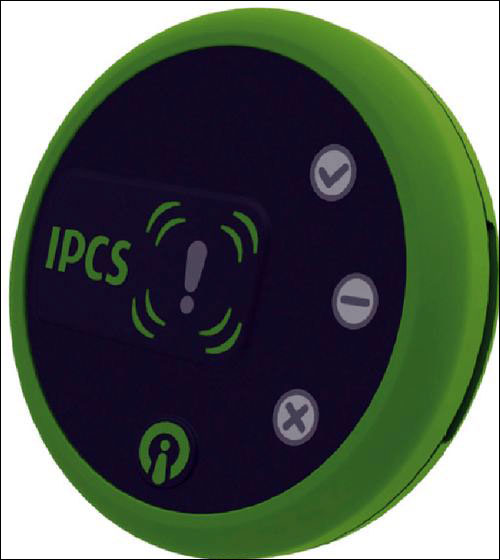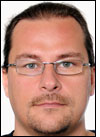Lipa Betoni, a Finnish producer of precast concrete structures, is using a Bluetooth-based real-time location system (RTLS) to manage the manufacturing of its concrete pieces. The company creates 30 to 50 elements—such as columns, retaining walls and balconies—for the construction of buildings and roadways, on a daily basis. Many of the structures it creates are unique, requiring a more flexible manufacturing process. The firm wanted to determine the exact production time for each step taken to produce a precast element, but prior to installing 9Solutions‘ Indoor Positioning and Communication Solution (IPCS), it could only estimate such times.
The IPCS RTLS employs Bluetooth battery-powered RFID tags and reader nodes that plug into power outlets, as well as a cloud-based hosted server running 9Solutions software. The IPCS is less expensive than most other RTLS solutions, says Jari Kylmänen, 9Solutions’ cofounder and R&D manager, as well as easier to install. The system is used by businesses throughout Europe (primarily in the Nordic region of Scandinavia), such as hospitals and mines, in order to track assets and personnel.

The company offers several types of tags, some designed as ID badges, for applications involving the tracking of personnel, as well as for others designed to monitor equipment or other assets. All of 9Soutions’ tags are battery-powered, and include a Bluetooth radio transceiver powered by a cell battery. The ID badge tags have a button that, when pressed, can be used, for example, to indicate a need for assistance. The nodes are powered by either a transformer that plugs into a power outlet or, in the event that power fails, a rechargeable 48-hour back-up battery. The nodes receive the tags’ Bluetooth transmissions and forward them to a gateway device—known as a Cell Controller Unit (CCU)—that then transmits the data to the server via a Wi-Fi or wired network connection. The nodes, which act as a self-organizing Bluetooth mesh network, not only receive and send information, but also act as locators, since they transmit their own ID number, along with that of the tags, to the CCU. If a user required room-level accuracy, for example, a node would be plugged into an outlet within each room. The CCU can also store data in the event of a loss of Internet access, until such a time that a connection is restored. The system can accomplish a read range of 10 to 30 meters (33 to 98 feet) for tag-to-node, node-to-node or node-to-CCU transmissions within an enclosed environment, says River Boche, 9Solutions’ sales and marketing manager, or up to 160 meters (525 feet) within an open environment.
To manufacture a precast element, Lipa Betoni must complete about 10 different steps, such as building the mold. A specific work crew is involved for each step—and in some cases, one working group may take part in several steps of an element’s manufacture. As a result, the company simply had to estimate work times for each step. Knowing every step’s work time, however, can be critical, since the firm can utilize that information to estimate the cost and time related to future projects incorporating some of those same steps.
With the IPCS system, Lipa Betoni attaches a Bluetooth tag to a drawing—a piece of paperwork that moves with the element throughout its production. That tag has a unique ID number associated with the element’s details, including the type of element and the specific customer. Each worker also wears a badge containing a built-in Bluetooth tag encoded with an ID linked in the IPCS software to that individual’s name and job title. Each tag transmits to nodes within the area, and the system determines the tag’s location based on which node initially received its transmitted signal, and then forwarded that tag’s ID. If a staff member’s badge is read within close range of a drawing’s tag for more than five minutes, the system determines that the individual employee is working on that particular element.

Workers keep their ID badge tags in their lockers when not using them. Since a tag stored in a locker remains stationary, the software detects its lack of movement and determines that the employee to which it is assigned must not be at work. When that staff member retrieves the badge at the beginning of a shift, the software detects that the tag is moving, and the software is updated to indicate that the person has begun working. The system also monitors the length of that person’s break periods, based on the amount of time a badge is read within one of the company’s rest areas.
IPCS Compass software acts as the location engine, linking the ID numbers of nodes and tags to a predetermined location within a facility. IPCS Smooth software acts as the graphical user interface, providing location data to a customer via the cloud-based server.
The 9Solutions system, says Satu Lipsanen, Lipa Betoni’s CEO, “offers multiple benefits to us. The system does not require dedicated maintenance staff, as 9Solutions is monitoring its performance in real time.” Management, he adds, can access data regarding the location of a particular element or worker, as well as a history of that item’s or individual’s movements, via the Internet. By knowing the location of its staff and elements, the company can provide more accurate quotations on future projects, based on the amount of time spent on steps during previous jobs. The staff location data also enables the firm to analyze and then improve on an employee’s efficiency, based on where that person appeared to be spending the bulk of his or her time.

When 9Solutions was founded more than two years ago, its mission was to design a system to track assets indoors. The company investigated the use of RFID and Wi-Fi technology, but concluded that these options required too much infrastructure—in the case of RFID, a reader network would have to be installed, while with Wi-Fi, additional access points would typically need to be provided to an existing system. “RFID is very good for a passive solution, but very heavy on infrastructure,” Kylmänen says. By late 2009, the company began developing a Bluetooth solution involving tags and nodes, designed and manufactured by 9Solutions.
Last week, 9Solutions announced its next-generation solution enabling the IPCS system to run on Apple‘s iPhone 4S and Motorola‘s Droid Razr. The latest version of 9Solutions’ system includes an app for the iPhone 4S and also supports Bluetooth 4.0 technology. This new system will operate with any mobile phone supporting Bluetooth 4.0, thereby enabling the phone to act as an IPCS tag. This will allow the location of individuals, for example, to be tracked within a specific facility via their phones, while using the same 9Solutions IPCS software and cloud-based server. In such a case, the phone’s Bluetooth chip would transmit a unique identifier, and the user’s data, such as that person’s name, could be input to link to that ID. He or she could then move about the facility at permitted access points, and if that individual were not permitted within a specific location, the system could provide an alert on the phone, or through the illumination of a light or an audible alarm installed onsite. Sid Shaw, the product marketing manager for low-power RF at Texas Instruments—which manufactures the CC2540, a low-energy Bluetooth 4.0 chip used in the IPCS tag—describes 9Solution’s technology as “robust, sophisticated and powerful, with some very useful applications.”



